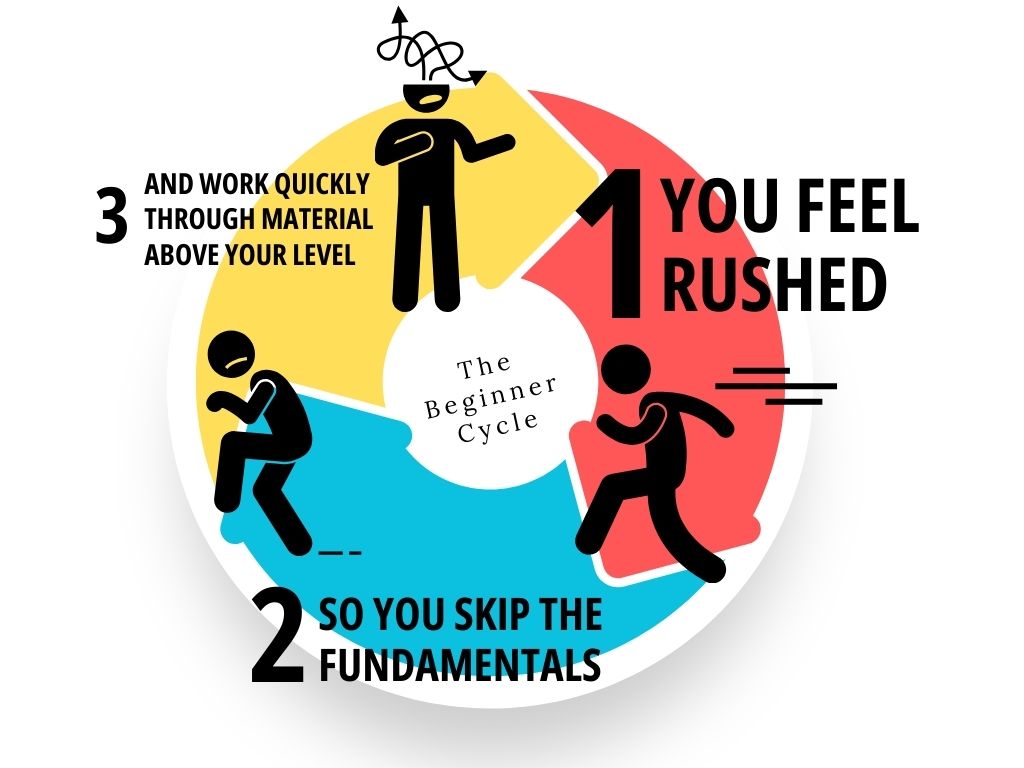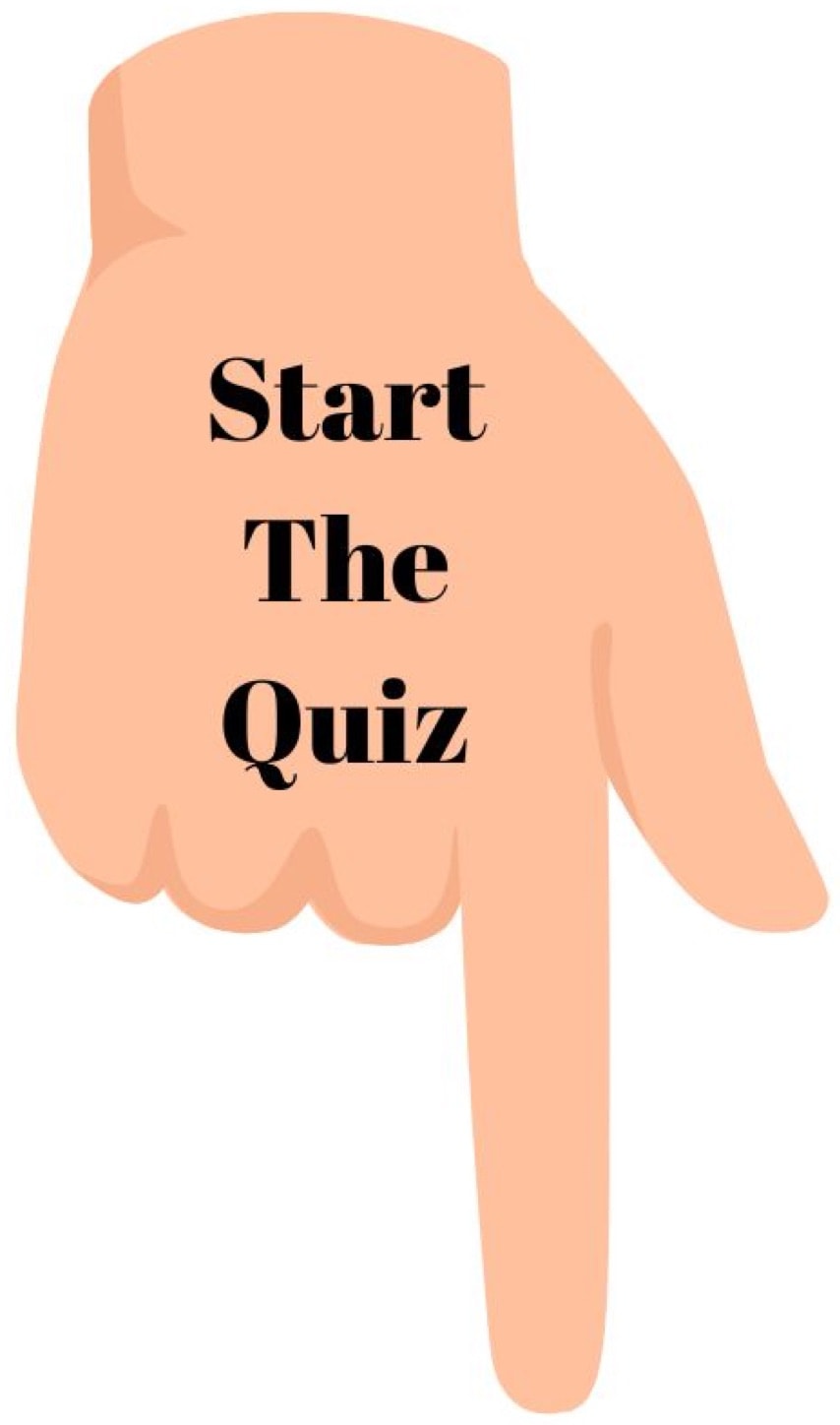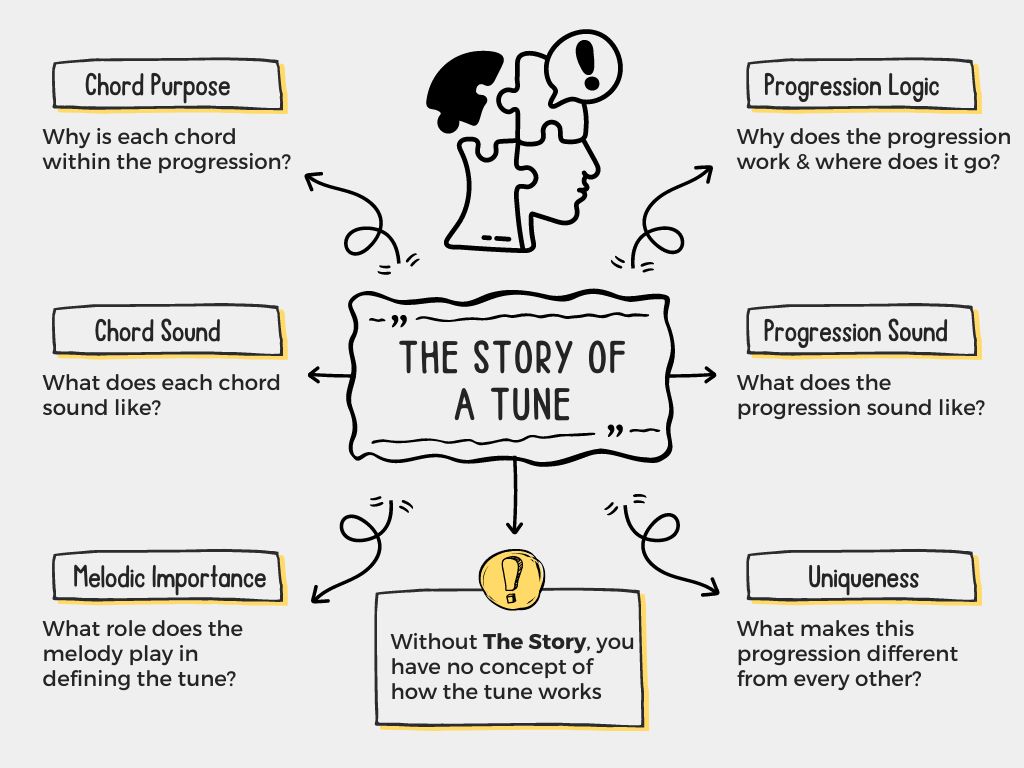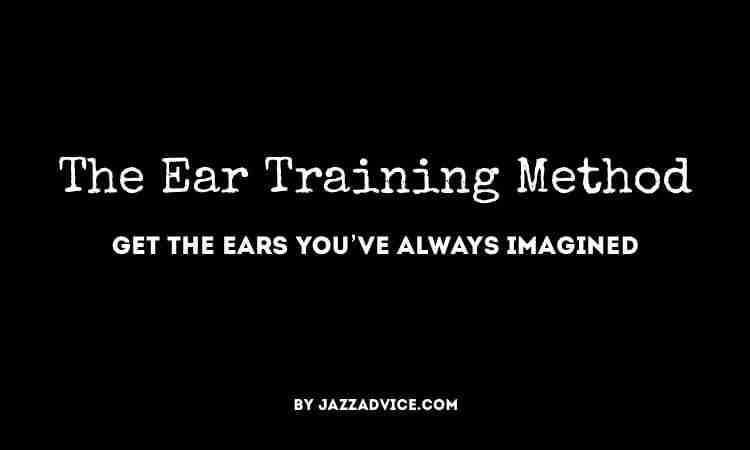Do you feel like you’re always trying to catch up? Like everyone else pursuing music started fifty steps ahead of you and the only way you’ll reach them is by moving as fast through the material as humanely possible?
This is how most beginner to intermediate jazz improvisers feel and unfortunately, without addressing it, this pattern tends to repeat over and over…
It’s what I call The Beginner Cycle.
The endless, and hopeless, cycle that captures beginners & intermediate improvisers, keeping them well below their potential indefinitely…
And the problem isn’t that you don’t know what to work on, or that you don’t have enough time. It’s actually much simpler than that: you feel rushed.

So what do you do when you feel this way?
You skip over the fundamentals, the proven practice exercises that lead to success. You can’t be bothered by the minutiae of everything…
And instead, you work as fast as you possibly can through material over your head, usually the latest & greatest practice concepts or books to hit the market.
The end result?
You never escape The Beginner Cycle and consequently, you don’t make the progress you want to in your playing.
Here’s what it looks like…

Now this is a serious problem because when you’re stuck in this cycle, you’re not actually getting better even though you may be spending a lot of time practicing.
You see, the slightly more complicated concepts that you’re attempting to study require solid fundamentals, so without them, the information doesn’t stick – it’s in one ear, out the other…
So to begin, how do you even know whether you’re stuck in the Beginner Cycle or not??
The Quiz: How to know if you’re in The Beginner Cycle
There’s no one-size-fits-all when it comes to anything around learning jazz, but with a few short questions, it can become clear whether or not you might have some areas to improve upon.
Now if you fall flat on your face during this, I’m not saying you’re a beginner or that you should give up…
In fact, no matter what your current level, it’s actually a good thing if all or some of these questions are challenging because that means there’s ample room for growth.
Before we start…
In just a moment you’ll start a quick 10 Question Quiz to know if you’re stuck in at least a small part of The Beginner Cycle…
Take the quiz honestly and write your answers down. And remember…if you don’t take it honestly, the only one you’re cheating is yourself.
The quiz is not being graded and no one cares how you did, so I strongly encourage you to use it as an honest assessment and view it as an opportunity to improve the way you improvise, rather than a blow to your ego.
Instructions for taking the quiz:
- You only have 2 seconds to answer each question
- Don’t worry about enharmonic spellings for chords & chord-tones
- Write your answers down
Okay, get a piece of paper and a pen ready, and If you don’t know the answer almost immediately, go on to the next question. Scroll down when you’re ready to start…
(Answers are given to you at the end of the test)

Start The Quiz Now
Question 1
You have 2 seconds to answer this…what’s the #5 of Ab7?
Question 2
You have 2 seconds to answer this…If Eb7 is the V7 chord, what’s the ii chord, and what major key are you in?
Question 3
You have 2 seconds to tell me what kind of chord this vamp uses after you listen to it once, and specify any alterations or upper extensions if present…
Question 4
You have 2 seconds to do this…think of the chord Db major 7. Think of a melodic line over this chord and hear it in your head.
Question 5
You have 2 seconds to answer this…what’s the 5th chord-tone of F Half diminished?
Question 6
You have 2 seconds to answer this…If you’re in the key of B major, what’s the minor ii V that moves you to the relative minor?
Question 7
You have 2 seconds to tell me what kind of chord this is in the vamp after you listen to it once, and specify any upper extensions or alterations if present…
Question 8
You have 2 seconds to do this…think of the chord Eb7. Think of a melodic line over this chord and hear it in your head.
Question 9
You have 2 seconds to answer this…how many major keys does F# minor live in and what are they?
Question 10
You have 2 seconds to tell me what kind of chord I’m playing in the vamp with upper extensions/alterations if present, and tell me what chord tone I’m playing on top of it after you listen to this once…
Let’s see how you did…
If you truly have good fundamentals, all of these questions should be pretty easy and require almost no thought at all.
But for most people, at any level, this will not be the case because the fundamentals of improvising are mostly skipped over today.
So even if you’re an intermediate or advanced player, I bet there were some questions here that made you think.
Ok, to see the answers, keep scrolling…

Question 1: What’s the #5 of Ab7?
Answer: E Natural
Question 2: If Eb7 is the V7 chord, what’s the ii chord and what major key are you in?
Answer: Bb minor 7 (Bb minor is fine too if you didn’t include the 7) and you’re in the key of Ab major.
Question 3: What kind of chord is in the vamp?
Answer: Major7b5

Db major7b5, although I notate the b5 as G instead of Abb because that’s how I think about it when I improvise.
You could also say Major7#11 (F# being raised to G), however there is no 5th in the chord, so it’s more along the lines of Major7b5, but either can be counted as correct. However, if you left out the major 7 or the b5/#11, it’s not correct.
Question 4: Think of the chord Db major 7. Think of a melodic line over this chord and hear it in your head.
Answer: If you could only think of a scale, arpeggio, or a scale/digital pattern, that’s not good enough. It must be a piece of jazz language and you must be able to hear it in your head, something like this Roy Hargrove line is a good example, transposed to Db here…

Notice that it’s lyrical, has a defined rhythm, and a clear melodic shape. This is what we’re looking for in a correct answer. You be the judge as to whether you met this criteria.
Question 5: What’s the 5th chord-tone of F Half diminished?
Answer: Cb or B natural. (Technically, the answer is Cb, but as a jazz musician there are many ways to think about chords and chord tones. I often think of it as B natural and that’s perfectly fine too)
Question 6: If you’re in the key of B major, what’s the minor ii V that moves you to the relative minor?
Answer: Bb half diminished | Eb7b9. You could also say Bb minor7b5 and just Eb7, or Eb7alt is fine too. And, you could say A# half diminished and D#7b9 because the relative minor could be seen as G# minor instead of Ab minor. I would never think like this, but some people would, so that can be seen as correct as well.
Question 7: What kind of chord is in the vamp?
Answer: Dominant 7b9 with a natural 13

B7b9 natural 13. It’s important that you noted it has both a b9 and a natural 13, or at least included a 13th in the sound. Without both of these upper extensions specified, the answer is not correct because they are integral to the sound.
Question 8: Think of the chord Eb minor. Think of a melodic line over this chord and hear it in your head.
Answer: If you could only think of a scale, arpeggio or scale/digital pattern, that’s not good enough. It must be a piece of jazz language and you must be able to hear it in your head…a part of this Roy Hargrove line is a good example, transposed to Eb minor here…

Again as before, notice that it’s lyrical, has a defined rhythm, and a clear melodic shape. This is what we’re looking for in a correct answer. You be the judge as to whether you met this criteria.
Question 9: How many major keys does F# minor live in and what are they?
Answer: 3 Keys: E major, D major, and A major
Question 10: What kind of chord am I playing in the vamp and what chord tone am I playing on top of it?
Answer: Dominant7#5#9 and I’m playing the #5 on top of it

G7#5#9. You could also say b13 (Eb) instead of #5 (D#) and that’s also correct.
Ok, so If this quiz was hard, there’s absolutely no reason to beat yourself up about it because strong fundamentals are what make anything difficult!!
And don’t worry because we’re going to address everything so you can see progress in record time.
But first…
Start Being Real With Yourself
Nobody is perfect…
And no matter if you lack every fundamental skill, or have a handle on all of them, you can always ingrain the fundamentals on a deeper level.
There is no end. No finish line. No arrival point. Just another level…

The real key to all of this is accepting that it’s okay that you missed out on some of the fundamentals, and understanding that you can easily go back and fill in these gaps.
Being honest about the gaps in your learning and getting excited to fill them is the first step in taking action toward becoming the player you wish to be
So rather than trying to learn Donna Lee, Giant Steps, or even a so-called easy tune like Blue Bossa, focus first on gaining the necessary fundamentals to play over a single chord in a melodic way.
Or instead of trying to tackle any tune for that matter, it’s useful to be able to hear what each chord in a progression would sound like and have the knowledge to understand how it’s put together.
This all contributes to The Story of a tune – the HOW and WHY behind what makes the tune tick.

Without these skills, a tune is nothing but a series of chord symbols, scale options, and mental math, which is NOT what jazz improvisation actually is.
So start being real with yourself, commit to getting the fundamental skills you know you need once and for all, and then everything from there will be 10 times easier…
The Fundamentals & The Quickest Way to Get Them
So what are the fundamentals I’m specifically talking about?
These are the skills that form the foundation for everything else – they’re some of the key components that we’ve found to have the largest impact on your playing no matter what level you’re at, what instrument you play, or which jazz style you prefer.

If you have these at a competent level, everything else will be a whole lot easier and make a whole lot more sense.
- Essential Jazz Ear Training Skills – Can you hear individual chords & progressions just as easily as if they were a familiar friend’s voice?
- Basic Jazz Language for Common Chords – Do you have an arsenal of vocabulary & concepts to draw from for each basic chord type?
- Quick Mental Recall of Chord-tones & Progressions – Can you mentally conjure up any chord tone of any chord instantly, or think of a progression in any key with minimal mental effort?
- Deep Understanding of Jazz Harmony – Are you thinking of scales and modes all the time, or do you understand how the chords of a tune actually fit together to tell a larger story of direction, tension, and release?
While these are obviously not all the fundamentals of learning to play jazz, these four will help you improve very fast in a direct and easy to understand manner.
You see, often when people want to improve at jazz, they focus on all sorts of esoteric concepts or overly complicated exercises.
But the reality is, by focusing on your ear, your language, your mental recall, and your harmonic understanding, you’ll make a ton of progress without getting into the weeds because these four areas cover a lot of ground.
Think about it…within each of these fundamentals, you’re getting work on a ton of necessary aspects of jazz improvisation…

You can easily see that by focusing your efforts on any one of these fundamentals, you’re actually covering a whole host of topics.
Next let’s talk about how you can approach each of these…
We’ve made it simple for you to improve at these fundamentals by creating tons of free lessons as well as a highly effective, step-by-step Fundamental Jazz Course for each of these fundamental skills.
Let’s take a look at…
Your Ear

If questions 3, 7, & 10 were especially difficult, then you’ll want to focus on improving your ear.
Start with these free resources…
- Can Your Ears Pass This Test? – Start by assessing your ear on a deeper level. You may find out that you have a bit more work to do in this area than you previously thought.
- How to Train Your Ears like a Jazz Musician – Next, take a look at the requirements for a jazz musician’s ear because they’re a bit heftier than if you were pursuing a different genre.
And then, to get the ear you’ve always imagined, go ahead and start The Ear Training Method. (Paid Course)

Imagine listening to the radio and knowing what each chord or interval is in a matter of seconds…
Or picture yourself walking on stage confident that you have the skills to hear any sound that hits your ears…
With the tools you’ll learn in this course, you can make this a reality.
Learn More About The Ear Training Method.
Your Language

If questions 4 & 8 were not so easy to do, then you’ll want to start improving your jazz language & concept.
Start with these free resources…
- Why You Need to Think About Jazz Language – First, realize why language is so important and the necessary steps you need to take toward acquiring it.
- How to Build Your Jazz Vocabulary Fast – Next, take a look at how you can start to build your jazz vocabulary by studying the greats.
And then level up your jazz language with Melodic Power. (Paid Course)

Transitioning from improvising “right” notes to meaningful melodies is quite a mystery to most. Ask many players and they’ll just tell you to transcribe…
But transcribing will only get you so far. It’s how you interpret the information and what you do with it that makes all the difference.
This course bridges the gap between transcribing your heroes and acquiring jazz language – It teaches you how to distill language into clear melodic techniques that will become part of your own improvisational arsenal.
Learn More About Melodic Power
Your Mental Recall

If questions 1 & 5 were tricky, then you’ll to want improve your ability to instantly think through chords and chord tones.
Start with these free resource…
- Visualization for Jazz Improvisation – Begin your visualization journey with this lesson, which is one of our very first lessons on the site. It’s a little bit dated compared to our modern lessons, but the information is still invaluable.
- How to Practice in Your Head – Brain Training 101 For Jazz Musicians – Next, find out how you can practice anywhere by leveraging brain training. Putting the exercises in this lesson to work will get your mental skills firing on all cylinders.
And then, take your visualization skills to new heights with Visualization for Jazz Improvisation. (Paid Course)

In this course, we’ve taken the powerful concepts and techniques of visualization, and applied them to the fundamentals of jazz improvisation.
By mentally rehearsing the elements of jazz that you encounter over and over, your mind will build the necessary mental structures to understand and anticipate the musical information you wish to conjure up in real-time.
The result? You turn music theory into something you can actually use.
Learn More About Visualization for Jazz Improvisation
Your Harmonic Understanding

If questions 2, 6, & 9 were tough for you, then you’ll to want improve your understanding behind chords, progressions, and how tunes are put together with an inherent sense of logic and structure.
Start with these free resources…
- The Basics of Chord Function – A solid understanding of chord function is so important for the modern jazz player, yet most people quickly skip over it. Put some time into this lesson, and really work toward building a strong foundation in functional harmony.
- Jazz Harmony: Why You’re Overlooking This Crucial Skill – Next, take a look at why harmony is so important and how pro improvisers use it to understand tunes on a deeper level.
And then, step up your harmonic knowledge by starting Jazz Theory Unlocked (Paid Course)

In this theory course, you’ll learn to see harmony and chord progressions in a whole new light.
No more guessing why a chord is there in the progression, and no more fumbling through the chord changes trying to connect two seemingly unrelated chords…
Everything is related and connected, but no one ever bothered to teach you how. And this is what’s holding you back…
Learn More About Jazz Theory Unlocked
It’s Time to Master The Fundamentals
If you’re still wallowing in The Beginner Cycle, do yourself a favor and take action today toward escaping it.
You don’t need to make the mistakes I did and wait years to come to these conclusions…

Here’s a humble look into my past to give you an idea…
My ear was absolutely horrendous for years. Even in music school, it took me multiple plays, and quite a bit of thought to arrive at merely a guess of an answer.
Or take my concept of language…
Back then, one of my teacher’s asked me to play a simple melodic idea over a major chord – a line or idea I had transcribed that I could use over a major chord.
I had almost nothing, and I what I did have was mechanical and contrived, not natural sounding jazz language that I’d learned from my heroes.
I know what it’s like to have no language at your disposal or even a remote concept of what language is. And I know what it’s like to not be able to hear your way through anything.
Now, you get the point…but these next two were especially crippling…
When my teacher asked me to play the 3rd & 7th of each chord in real-time, or slightly more difficult chord-tones like the b9 or #5, I’d always clam up.
It took me so much mental effort to think of the chord-tones, that I couldn’t even do these simple exercises.
And what’s more, I had to think so much about each chord just to recall them because I had little understanding behind the larger picture, the story of the tune and how harmony works in jazz.
But after years spent like this, I quickly turned all of these things around by focusing on The Fundamentals that I shared with you today.
If I can turn things around, anyone can. All it takes is a little self reflection and daily action toward your goals. You can master The Fundamentals, simply pick one and get to work!










